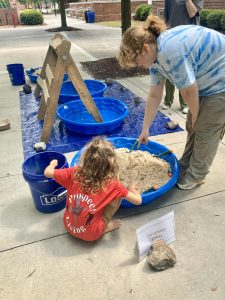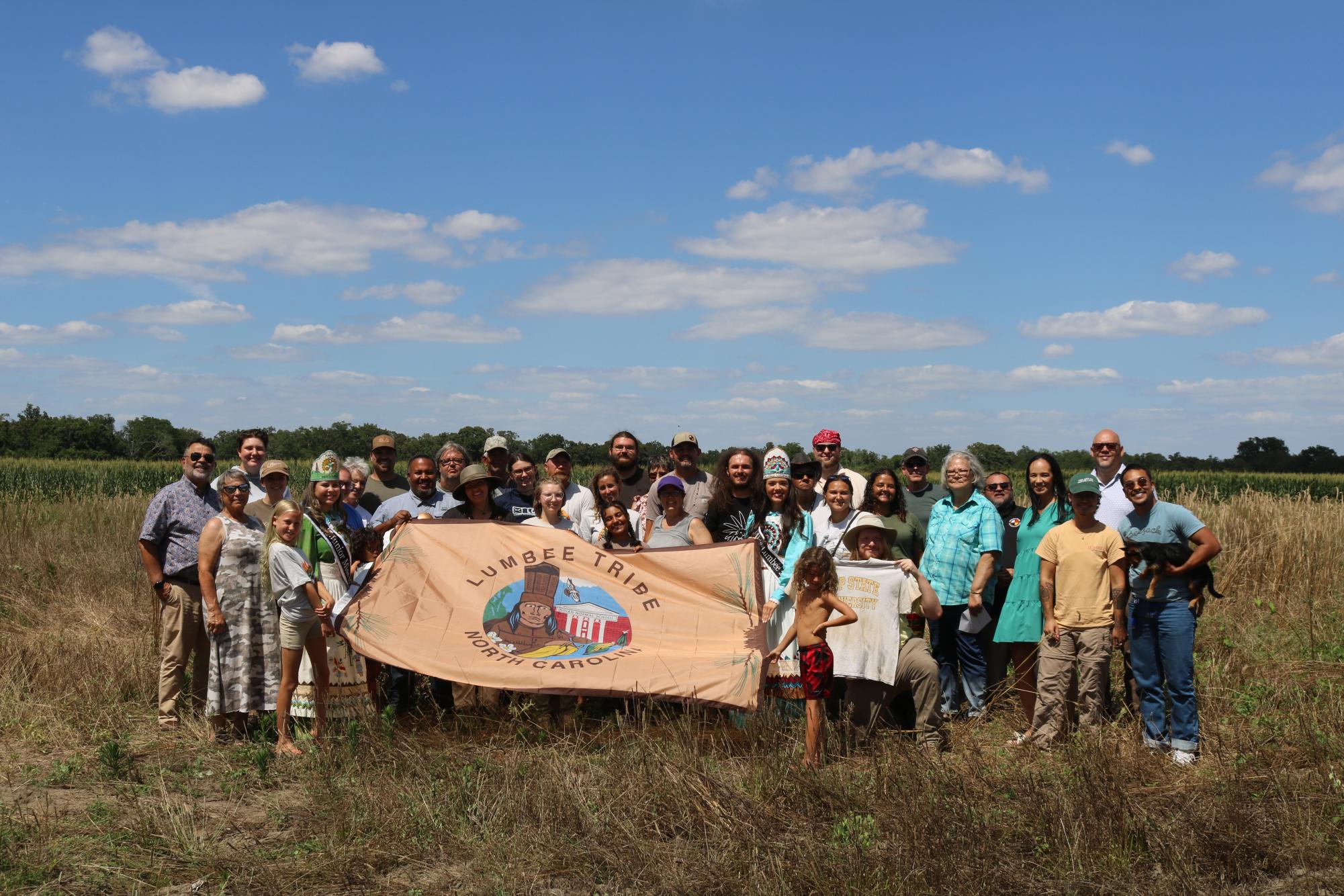Under the blazing North Carolina sun, a team of 15-20 App State student archaeologists unearthed pieces of history in the heart of Lumbee Tribal Territory. These students were some of the first to be offered this special glimpse into the Lumbee Native American archaeological past.
Students spent four weeks this summer at an archeological dig site near Pembroke investigating tribal cultural heritage. Led by Assistant Professor Seth Grooms in the Department of Anthropology, the group navigated learning about archaeology while respecting the Lumbee culture and land.
It is rare for students to have the opportunity to do research, as well as interact with the community.
“They were fully immersed in all aspects of our culture, even around the dinner table they were experiencing the culture and learning from the ground up,” Grooms said.
With one teacher, 14 students and two teacher’s assistants, Grooms had a lot on his plate.
“The three of us were constantly working together to make a plan, we met every night to make a plan for the day and how we were going to teach,” teacher’s assistant, Nashaliz Velazquez-Santa said.
Each day presented new challenges, with the group having to adapt to harsh summer weather conditions and unexpected storms that forced them to move to multiple campsites throughout the summer.
“An archeological picnic is not a game, it sucks,” Grooms said.
The group spent their time surveying the land for potential dig sites, and making square shaped excavation units. Over the 4 week period the team collected various ceramics, arrowheads, spears and other materials. The pottery showed evidence of Siouan-speaking influences from the Piedmont which Grooms said helped the team both visualize the history of land and connect with the community.
“We know they spoke these languages but we are also seeing it in our hands,” Grooms said. “It’s cool to see these two ways of knowing weave together.”

On June 15, the team held a Community Day where locals gathered to see the work done throughout the month. Families were welcomed to see the artifacts and educational stations were set up for kids to learn about archaeology. The event created the opportunity for some of the community to interact with their ancestors’ artifacts for the first time.
“To say, ‘Here’s a piece of pottery, hold it in your hands, your ancestors made this,’” Grooms said while explaining the interactions between him and other members of the tribe. “That is really cool.”
Grooms is a member of the Lumbee tribe and grew up less than an hour from the heart of the tribe in Robeson County. His uncle made clothing, crafts and participated in powwows. Grooms said this helped connect him and his brother to their culture while growing up. This early involvement in the tribe sparked Grooms’ interest in working with his community, and eventually led to the organization of this dig.
Grooms’ infatuation with history started at a young age when he went on a vacation with his family to Topsail Island. He recalled a story where his parents put together a treasure hunt where they hid “Blackbeard’s treasure” for him.
“They buried a little bag under the sand at the house we were staying at, I ended up digging it up and had so much fun,” Grooms said. “As a kid I was always interested in history and digging things up and being outside and engaging with it, rather than just having my head in a history book.”
After graduating high school, Grooms enlisted in the U.S. Marine Corps where he was stationed in Iraq. Surrounded by thousands of years of history near the Tigris and Euphrates rivers, Grooms said he started to realize how much he truly appreciated it.
“It hit me that I really had a fascination with all the ruins and landscape, my buddies would be like, ‘What’s wrong with you, we have stuff to focus on’ and I would just be thinking about these ruins,” Grooms said.
Grooms’ adventures sparked a lifelong fascination with history, which drew him to anthropology and teaching. Coming to App State, Grooms knew he wanted to organize his dream archaeological dig back home on the Coastal Plains. After years of planning and anticipation, Grooms was able to make it happen.
“It was a really special and impactful experience, it was everything that I could have dreamed it could be and a lot more,” Grooms said.
Students were able to interact with the land and the culture of the community in a myriad of ways. In addition to conducting the digs, the team also coordinated with the Lumbee Cultural Burn Association to light controlled burns, which Grooms explained have been done by the Lumbee for thousands of years to help get rid of the underbrush in the forest and prevent wildfires.
“For students, learning how to do archaeology along with the rare opportunity of ‘how do you do this with a native community’ they were fully immersed in all aspects of our culture,” Grooms said.
With the start of this program being a success, Grooms said he is excited and hopeful about the future possibilities and longevity of the dig.
“I want this project to live longer than me, this was year one of a project that will live on for many, many, many years,” Grooms said.



